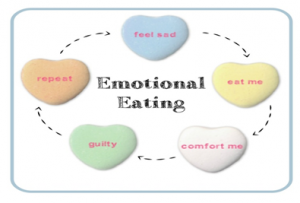
Emotional eating is using food to make yourself feel better-eating to satisfy emotional needs, rather than to satisfy physical hunger. You might reach for ice cream when you’re feeling down, order a pizza if you’re bored or lonely, or seek comforting food after a stressful day at work.
Occasionally using food as a pick me up, a reward, or to celebrate isn’t necessarily a bad thing. But when eating is your primary emotional coping mechanism—when your first impulse is to open the refrigerator whenever you’re stressed, upset, angry, lonely, exhausted, or bored—you get stuck in an unhealthy cycle where the real feeling or problem is never addressed.
Emotional hunger isn’t satisfied once you’re full: You keep wanting more and more, often eating until you’re uncomfortably full. Physical hunger, on the other hand, is different you tend to eat until satisfied and stop when you feel full.
Emotional hunger isn’t located in the stomach: Unlike physical hunger which might be indicated by a growling tummy or a pang in your stomach, emotional (or head hunger) you feel your hunger as a craving you can’t get out of your head. You tend to focus on specific textures, tastes, and smells.
Try to find other ways to manage your emotions: If you don’t know how to manage your emotions in a way that doesn’t involve food, you will struggle to control your eating habits for very long. Diets so often fail because they offer logical nutritional advice which only works if you have conscious control over your eating habits. Sometimes our emotions get in the way and affect the food choices we make. It is important to try and find other ways to manage our emotions.
Back to Healthy Weight Grampian Homepage
Back to Our Relationship With Food
